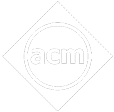- Written by Harshitha A
- Last Modified on 10-12-2024
Manipur Board Class 9 2025
Manipur Board Class 9 exams are conducted by the Board of Secondary Education, Manipur (BSEM). The board was founded in 1972, and its headquarters is in Ministerial Block, Imphal. BSEM is a state board that makes a constant effort to provide the best education to the students of Manipur.
The board has regulated the CCE pattern to match the latest syllabus. The state board of BSEM constantly strives to provide the best quality education to the students of Manipur. Earlier, higher secondary classes were also regulated by the BSEM. But now, it is conducted by the Council of Higher Secondary Education, Manipur (COHSEM).
Manipur Board Class 9 Exam Summary
All relevant information about the Manipur Board examination Class 9, administered by the BSEM, is provided below. The table includes information about the exam, the frequency with which it is administered, the various language options available, and other important details.
| Particulars |
Details |
| Conducting Authority |
Board of Secondary Education, Manipur (BSEM) |
| Exam Name |
Manipur Board Class 9 Exam |
| Exam Dates (Tentative) |
February/ March |
| Exam Mode |
Offline |
| Paper Medium |
English (Except for Other Language Exams) |
| Result Date (Tentative) |
April/ May (Tentative) |
| Website |
bsem.nic.in |
Manipur Board Class 9 Brochure
The brochure link for https://bsem.nic.in/curriculum/IX-X.pdf is available here.
Manipur Board Class 9 Official Website Link
https://bsem.nic.in/index.html
Manipur Board Class 9 Exam Pattern
It is necessary for students to know the Class 9 exam pattern before starting their preparation. Students can check the section below to know the details related to the Manipur Board Class 9 exam pattern.
Manipur Board Class 9 Exam Pattern Details - Scoring Pattern (+/- Marking)
The examination pattern of BSEM Class 9 comprises the marks distribution along with the passing marks. The total duration of the Manipur Board class 9 exams is 3 hours. As per the Continuous and Comprehensive Evaluation (CCE) pattern, the tests are divided into two types, namely:
- Periodic Tests: Four tests in each subject in June, July, October, and November.
- Term Tests: Two tests in each subject in September and February.
In each subject, 20% of marks will be for internal assessments, and 80% of the total marks will be for the final evaluation.
Scheme of C.C.E. (Continuous and Comprehensive Evaluation)
In one academic year, under the scheme of C.C.E, there shall be the following three categories of tests:
- Four monthly tests for every subject in April, June, August and October.
- Two term tests in July and September.
- One sessional examination in November.
| Subject |
Theory Marks |
Pass Marks |
| First Language |
80 |
33% |
| Social Science |
80 |
33% |
| Mathematics |
80 |
33% |
| English |
80 |
33% |
| Optional Subject |
80 |
33% |
Manipur Board Class 9 Marking Scheme
It is recommended that students prepare for the exam by reviewing the marking scheme. The marking scheme will help students understand how many marks each chapter is worth. Students can find the marking scheme for Manipur Board class 9 from the table below.
| Subject |
Maximum Marks |
Duration of Exam |
| First Language or the Subject in Lieu of the First Language |
100 |
3 Hours |
| English |
100 |
3 Hours |
Mathematics
Theory
Practical |
80
20 |
3 Hours
1 Hour |
Science
Theory
Practical |
80
20 |
3 Hours
1 Hour |
| Social Sciences |
100 |
3 Hours |
| Additional Subject |
100 |
3 Hours |
Manipur Board Class 9 Practical Marks
The Manipur class 9 marking scheme shows the unit-wise distribution of marks for each subject. It assists us in understanding the paper pattern, types, and several questions from each chapter of the syllabus, as well as identifying essential topics with high weightage. Students can get the class 9 Manipur Board practical marks from the table below.
| Particulars |
Marks |
| Laboratory Notebook |
2 Marks |
| Viva-voce |
3 Marks |
| Experimental Exercise |
5 Marks |
| Total |
10 Marks |
Manipur Board Class 9 list of subjects are:
- First Language: Manipuri, Hindi, Assamese, Bengali, Mizo, Paite, Hmar, Tangkhul, Nepali, Zou, Thadou-Kuki, Kom, Vaiphei, Mao, and Ruangmei.
- Other subjects in lieu of first languages also include Additional English, Elementary Manipuri, and Elementary Hindi
- Second Language
- Mathematics
- Science
- Social Science
- Work Experience
- Health and Physical Education
Manipur Board Class 9 Passing Criteria
Students who will be appearing for the exam must go through the Manipur Board Class 9 passing criteria to be on top of their game. To pass the Manipur board Class 9 examination, students must get 33 marks in each subject individually.
- 33 out of 100 marks in First language or subjects in lieu of the First language.
- 33 marks out of 100 in English.
- 33 marks out of 100 in Mathematics.
- 33 marks out of 100 in Science.
- 33 marks out of 100 in Social science.
- 33 marks out of 100 in Additional subject.
Manipur Board Class 9: Classification of Grade
Students must also be aware of the Manipur Board Class 9 division of grades to understand the marking scheme. This will help student ace the exams. Students can find the class 9 Manipur Board classification of grade below.
| Particulars |
Details |
| III Division |
165 Marks and Above but Below 225 |
| II Division |
225 Marks and Above but Below 300 |
| I Division |
300 Marks and Above the Average |
| Letter |
80% Marks or Above in a Particular Subject |
Manipur Board Class 9 Exam Syllabus
Manipur Board Class 9 has seven subjects. There are two language subjects in the syllabus—one elective language and a compulsory language (English). Class 9 syllabus or curriculum is the list of all chapters, topics, and concepts which will be taught in an academic year, according to the Manipur board.
Students can download the pdf format of the Manipur Class 9 syllabus by following the instructions below:
- 1st Step: Visit the Manipur Board’s official website: bsem.nic.in.
- 2nd Step: On the right side menu list, select the “Curriculum & Syllabus” option.
- 3rd Step: Click on Curriculum – Class IX-X. View and download the pdf file for future reference.
Manipur Board Class 9 Science Syllabus
Science can be found all around you. If you want to learn about how the things around you work, use Embibe to study with real-world examples. You will understand and have a firm grasp on all of the chapters in this section. Students can find the Science syllabus for Class 9 Manipur Board from the table below:
| Unit Number |
Unit Names |
| 1 |
Nature Of Matter |
| 2 |
Pure Substances And Mixture |
| 3 |
Atoms And Molecules |
| 4 |
Symbols, Formulas And Equation |
| 5 |
Structure Of An Atom |
| 6 |
Motion |
| 7 |
Force And Laws Of Motion |
| 8 |
Gravitation |
| 9 |
Work, Energy And Power |
| 10 |
Floatation |
| 11 |
Waves And Sound |
| 12 |
The Fundamental Of Life : Cell |
| 13 |
Tissue |
| 14 |
Biological Diversity |
| 15 |
Human Diseases |
| 16 |
Transportation Of Substances Inside The Body |
| 17 |
Food – Higher Yields |
| 18 |
Natural Resources |

Manipur Board Class 9 English Syllabus
Students should thoroughly review the syllabus before beginning exam preparation. Students should also visit Embibe, which provides Manipur Board Class 9 study material. Class 9 students can find the English syllabus for Manipur Board from the table below:
| Part |
Section |
Topics |
| Readling |
Section-A
Comprehension |
Unseen Passage
Multiple-Choice Questions based on a Discursive passage of 400-450 words to test inference, evaluation and vocabulary. Ten out of twelve questions to be answered.
Multiple-Choice Questions based on a Case-based factual passage (with visual input statistical data, chart etc.) of 200-250 words to test analysis and interpretation. Ten out of twelve questions to be answered. (Total length of two passages to be 600-700 words) |
| Course Book |
Prose |
Manipur A Land of Enchanting Flowers
Seven Sister States
Fiction that came True
Divine Wind That saved Japan
Code of conduct of the Manipuri Martial Art – Thang – Ta
The Olympics and the Spirit Behind It.
Pulling Children Out of Nepals Prison
The Eskimos: People who live in the Snow
The Loktak Lake
Climate Change, GlobaI warning, Melting Ice and Its Effects |
| Writing |
Section-B |
Essay
Letter Writing
Report Writing
Paragraph Writing/Amplification
Notice (Simple) |
| Grammar |
Section-C |
Determiners
ModaI Verb
Voice
Narration
Tense
Question Tag |
| Literature |
Prose |
Adolf
Thank You, Ma’am
The taste of an Hilsa |
| Play |
The Rice Cakes |
| Poetry |
Abou Ben Adhem
Coromandel Fishers
Silver
A Dawn Song |
Manipur Board Class 9 Maths Syllabus
Tired of getting stuck on a particular equation while studying Math? Then, with Embibe, you can put an end to all of your worries. All of these questions will be answered in simple language here. Students can find the Mathematics syllabus for Manipur Board Class 9 from the table below:
| Unit Number |
Unit Name |
| 1 |
Number Systems |
| 2 |
Polynomials |
| 3 |
Co-Ordinate Geometry |
| 4 |
Linear Equations In Two Variables |
| 5 |
Introduction To Euclid’s Geometry |
| 6 |
Lines And Angles |
| 7 |
Triangles |
| 8 |
Quadrilaterals |
| 9 |
Area |
| 10 |
Circles |
| 11 |
Constructions |
| 12 |
Mensuration |
| 13 |
Trigonometry |
| 14 |
Statistics |
| 15 |
Probability |
Manipur Board Class 9 Social Science Syllabus
Students who will be appearing for the exam must also be thorough with the Social Science syllabus to score good marks in the exam. Class 9 students studying in schools affiliated to the Manipur Board, can find the Social Science syllabus for from the below table:
| Unit Number |
Unit Name |
| History |
| 1 |
The French Revolution |
| 2 |
The Russian Revolution |
| 3 |
The Rise of Nazism |
| 4 |
Forest, Society and Colonialism
Farmers & Peasants |
| 5 |
Clothes and Culture |
| Geography |
| 1 |
India: location, relief, structure, major physiographic units |
| 2 |
Drainage; major rivers and tributaries; lakes; role of rivers in the economy; pollution of rivers, measures to control river pollution |
| 3 |
Climate; factors influencing the climate; monsoon-its characteristics, seasons; rainfall and temperature distribution; climate and human life. |
| 4 |
Natural vegetation: vegetation types; distribution as well altitudinal variation; need and various measures for conservation Wildlife: major species, their distribution; need and various measures for conservation. |
| 5 |
Population: size; distribution; age and sex composition; population change – migration as a determinant of population change; literacy;
health; occupational structure and national population policy; adolescents as under-served population group with special needs |
| 6 |
Manipur: Location; relief and structure; drainage; climate; vegetation; natural wildlife and population. |
Manipur Board Class 9 Exam Blueprint
The Manipur Board Class 9 exam blueprint assists students in becoming acquainted with the weightage of each chapter for each subject. It is critical for creating a well-planned study routine and determining how much time students should devote to each topic. Students can check the subject-wise blueprint for Manipur Board Class 9 from the below section.
Manipur Board Class 9 Maths Blueprint
Below we have provided the Manipur Board Class 9 Maths blueprint to help students understand how much marks each section in the exam carries. The exam blueprint for Class 9 Mathematics exam is as follows:
| Unit Number |
Unit Name |
Marks |
| I |
Number Systems |
7 |
| II |
Polynomials |
7 |
| III |
Co-Ordinate Geometry |
6 |
| IV |
Linear Equations In Two Variables |
7 |
| V |
Lines And Angles |
6 |
| VI |
Triangles |
6 |
| VII |
Quadrilaterals |
8 |
| VIII |
Area |
7 |
| IX |
Circles |
7 |
| X |
Constructions |
6 |
| XI |
Mensuration |
7 |
| XII |
Trigonometry |
7 |
| XIII |
Statistics |
11 |
| XIV |
Probability |
8 |
| |
Total |
100 |
Manipur Board Class 9 Science Blueprint
Below we have provided the Manipur Board 9th Science blueprint to help students prepare effectively for the final exams. The exam blueprint for the Class 9 Science exam is as follows:
| Unit Number |
Unit Name |
Marks |
| I |
Nature Of Matter |
2 |
| II |
Pure Substances And Mixture |
5 |
| III |
Atoms And Molecules |
5 |
| IV |
Symbols, Formulas And Equation |
7 |
| V |
Structure Of An Atom |
7 |
| VI |
Motion |
8 |
| VII |
Force And Laws Of Motion |
7 |
| VIII |
Gravitation |
6 |
| IX |
Work, Energy And Power |
5 |
| X |
The Fundamental Of Life : Cell |
12 |
| XI |
Tissue |
2 |
| XII |
Biological Diversity |
8 |
| XIII |
Human Diseases |
8 |
| XIV |
Transportation Of Substances Inside The Body |
1 |
| XV |
Food – Higher Yields |
2 |
| XVI |
Natural Resources |
3 |
| Total |
80 |
|
| Internal Assessment |
20 |
|
| Grand Total |
100 |
|
Manipur Board Class 9 Social Science Blueprint
The theory paper of Social Science will be conducted for 80 marks. It will be a 3 hours paper. The exam blueprint for the Class 9 Science exam is as follows:
| Unit Number |
Unit Name |
Marks |
| History |
|
| 1 |
The French Revolution |
7 |
| 2 |
The Russian Revolution |
7 |
| 3 |
The Rise of Nazism |
8 |
| 4 |
Forest, Society and Colonialism |
5 |
| Geography |
|
| 1 |
India: location, relief, structure, major physiographic units |
8 |
| 2 |
Climate; factors influencing the climate; monsoon-its characteristics, seasons; rainfall and temperature distribution; climate and human life. |
9 |
| 3 |
Natural vegetation: vegetation types; distribution as well altitudinal variation; need and various measures for conservation Wildlife: major species, their distribution; need and various measures for conservation. |
5 |
| 4 |
Manipur: Location; relief and structure; drainage; climate; vegetation; natural wildlife and population. |
5 |
Manipur Board Class 9 English Blueprint
Students can check the table below to know the BSEM Class 9 English blueprint. The distribution of marks for each of these sections is as below:
| Unit Name / Chapter |
Recommended Portion |
Marks |
Section-A
Comprehension |
Unseen Passage
Multiple-Choice Questions based on a Discursive passage of 400-450 words to test inference, evaluation and vocabulary. Ten out of twelve questions to be answered.
Multiple-Choice Questions based on a Case-based factual passage (with visual input statistical data, chart etc.) of 200-250 words to test analysis and interpretation. Ten out of twelve questions to be answered. (Total length of two passages to be 600-700 words) |
10 |
| Prose |
Manipur A Land of Enchanting Flowers
Seven Sister States
Fiction that came True
Divine Wind That saved Japan
Code of conduct of the Manipuri Martial Art – Thang – Ta
The Olympics and the Spirit Behind It.
Pulling Children Out of Nepals Prison
The Eskimos: People who live in the Snow
The Loktak Lake
Climate Change, GlobaI warning, Melting Ice and Its Effects |
15 |
| Section-B |
Essay
Letter Writing
Report Writing
Paragraph Writing/Amplification
Notice (Simple) |
7
5
5
5
3 |
| Section-C |
Determiners
ModaI Verb
Voice
Narration
Tense
Question Tag |
10 |
Section-D
Prose |
Adolf
Thank You, Ma’am
The taste of an Hilsa |
7 |
| Play |
The Rice cakes |
7 |
| Poetry |
Abou Ben Adhem
Coromandel Fishers
Silver
A Dawn Song |
6 |
| |
Total |
80 |
Manipur Board Class 9 Practical/ Experiments List and Model Write up
Science – List of Experiments
- Preparation of a true solution of common salt, sugar and alum, a suspension of soil, chalk powder and fine sand in water and a colloidal solution of starch in water and egg albumin/milk in water and distinguish between these on the basis of transparency, filtration criterion, and stability
- Preparation of A mixture, A compound using iron filings and sulphur powder and distinguishing between these on the basis of: appearance, i.e., homogeneity and heterogeneity, behaviour towards a magnet, behaviour towards carbon disulphide as a solvent, and effect of heat
- Separation of the components of a mixture of sand, common salt and ammonium chloride (or camphor).
- Perform the following reactions and classify them as physical or chemical changes: Iron with copper sulphate solution in water, Burning of magnesium ribbon in air, Zinc with dilute sulphuric acid, Heating of copper sulphate crystals, Sodium sulphate with barium chloride in the form of their solutions in water
- Preparation of stained temporary mounts of onion peel, human cheek cells & to record observations and draw their labelled diagrams.
- Identification of Parenchyma, Collenchyma and Sclerenchyma tissues in plants, striped, smooth and cardiac muscle fibres and nerve cells in animals, from prepared slides. Draw their labelled diagrams.
- Determination of the melting point of ice and the boiling point of water.
- Verification of the Laws of reflection of sound.
- Determination of the density of solid (denser than water) by using a spring balance and a measuring cylinder
- Establishing the relation between the loss in weight of a solid when fully immersed in Tap water Strongly salty water with the weight of water displaced by it by taking at least two different solids
- Determination of the speed of a pulse propagated through a stretched string/slinky (helical spring).
- Study of the characteristics of Spirogyra, Agaricus, Moss, Fern, Pinus (either with male or female cones) and an Angiospermic plant. Draw and give two identifying features of the groups they belong to.
- Observe the given pictures/charts/models of earthworm, cockroach, bony fish and bird. For each organism, draw their picture and record: one specific feature of its phylum. one adaptive feature with reference to its habitat.
- Verification of the law of conservation of mass in a chemical reaction.
- Study of the external features of root, stem, leaf and flower
Manipur Board Class 9 Study Plan to Maximise Score
A detailed and well-planned study plan aids students in understanding fundamental concepts and improving overall performance. Here we have shared some basic tips which help students in Class 9 exam preparation.
- Identify your weak areas and allot time to strengthen them. Seek help from your teachers and classmates. You can also educate yourself using the internet.
- Make a schedule and stick to it under all circumstances.
- Allocate time to revision; it helps you to understand and recall the concept better.
- Do not start a new chapter before the day of the exam; leave it if you have not touched it till now. Starting a new chapter at the last minute only wastes valuable time, and you can not absorb all its concepts in a hurried glimpse.
- Solve previous year question papers and sample papers as much as possible. You will learn the pattern of the question paper and important topics. Also, you will learn to manage your time in exams.
- Once you learn a new formula, try to solve it numerically. Make a table of important formulas. It will help you to revise just before the exam
Manipur Board Class 9 Detailed Study Plan
Preparing a study plan is an important stage before you start preparing for the Class 9 exam. Here, we will help you prepare a study plan that can help you pass the exam with flying colours:
- Apart from Mathematics, devote 1-1.5 hours every day to all other topics.
- Mathematics requires a lot of practice, so allocate at least 2 hours for Maths.
- Set aside 1.5 hours for Science revision. Within this 1.5 hour, assign time for Physics, Chemistry, and Biology. On any given day, you can study one, two, or all three Science papers, depending on your convenience and need.
- Similarly, set aside 1.5 hours for revision of the Social Sciences (History, Geography, Civics, etc.).
- Each day, devote one hour to one of the literature topics (English, Hindi, or Sanskrit). If you study English from 8 to 9 pm on Monday, you should study Hindi/Sanskrit from 8 to 9 pm on Tuesday.
- Be willing to adjust your schedule according to your abilities, convenience and need.
- Do not stretch the study hours for more than 2 hours at a time. Take regular breaks of 10-15 mins and refresh yourself.

These are the few most frequently asked examination-related to Manipur Board Class 9 exam:
Q: Do all the subjects in Class 9 BSEM have practicals?
Ans: No, not all subjects have practicals. Practicals will be held for Science and Mathematics only for 20 marks.
Q. What are the required minimum marks to pass a particular subject?
Ans: In a 100-mark paper, the minimum number of marks required to pass each subject is 33.
Q. Are there any elective subjects in Manipur Board Class 9?
Ans: Yes, students can select an additional subject from a list of five options, which include Hindi, Commerce, Home Science, Higher Mathematics, and Computer Science. Students who have elementary Hindi as their first subject are not permitted to take Hindi as an additional subject.
Q. How much time should I study for the Class 9 exam?
Ans: There is no set time for preparing for Class 9 exam. However, it is always advisable to give yourself as much time as possible to prepare because smart and consistent preparation can guarantee a good score.
Q. What is the best way to deal with exam stress?
Ans: The most effective way to cope with exam stress is to stop overthinking. Take short breaks between study sessions to refresh your mind. Believe in your preparation and give your all without worrying about the outcome.
Manipur Board Class 9 List of Educational Institutions
The state’s primary and secondary schools are governed by the Board of Secondary Education. The board currently has 786 higher secondary schools (226 government, 103 government-aided, and 457 private) affiliated with it. The state’s schools are either run by the government or by private organisations.
| Sl. No. |
List of Schools |
| 1 |
Abdul Ali High Madrassa, Lilong |
| 2 |
Ananda Purna School, Thoubal (Tomjing) |
| 3 |
Central High School, Challou. B.P.O, Lamlai |
| 4 |
City Montessori Hr. Sec. School, Lamphel |
| 5 |
Diamond Academy, Kha-Sanjenbam |
| 6 |
Eastern Popular English High School, Heirok |
| 7 |
Gorkha High School, Kalapahar |
| 8 |
Irilbung High School, Irilbung |
| 9 |
Kakching Khunou Makha High School |
| 10 |
Lamlaba High School, Lamlaba Village, Tamei |
| 11 |
M.K.S.M.T. High School, Mongjam |
| 12 |
Meitei Mayek High School, Kongba |
| 13 |
Nungnang High School, Nungba |
| 14 |
Padma Ratna English School, Kakching |
| 15 |
Paonam Pakaleima Public School, Kiyam |
To view the complete list of schools in Manipur, Click Here.
Manipur Board Class 9 List of Future Exam
Studying for BSEM Class 9 exams also helps students in preparing for other competitive examinations such as: International Science Olympiad (ISO):
The International Science Olympiads are a group of worldwide annual competitions in various areas of the formal sciences, natural sciences, and social sciences.
- National Social Studies Olympiad (NSSO): This is an exam that tests students’ knowledge of social subjects such as History, Geography, and Civics. NSSO is conducted by the Indian Talent Olympiad at the national level once a year. The exam is conducted within the school premises itself, so it is made easy for the students to attempt. The syllabus for NSSO is based on the syllabus which is taught in school.
- National Talent Search Examination (NTSE): Maths, Social Science, Science, General Knowledge and Mental Ability are tested.
- National Level Science Talent Search Exam (NLSTSE): The subjects evaluated are Science, Mathematics, and General Awareness.
- GeoGenius: In this exam, students are asked to draw various locations in India on a blank map in order to pique their interest in geography.















































